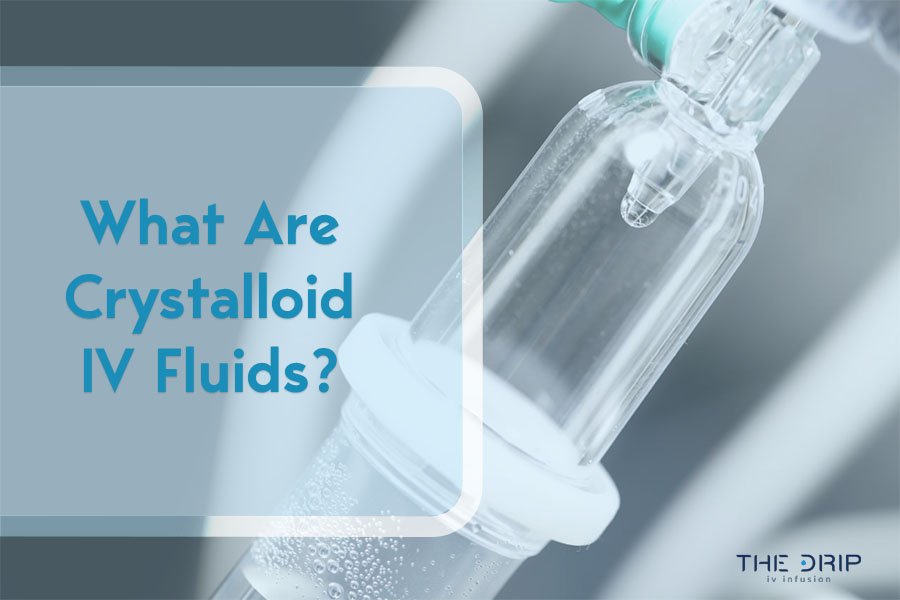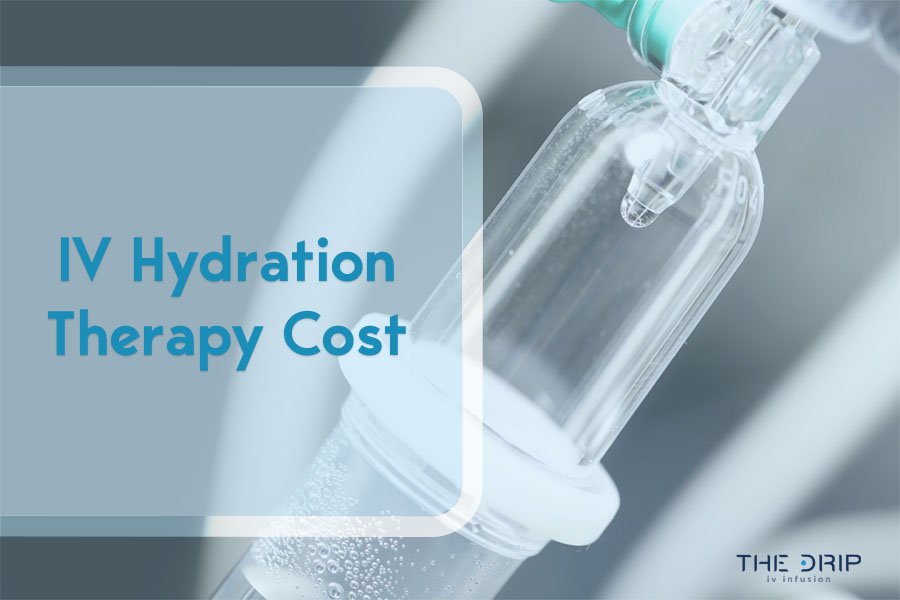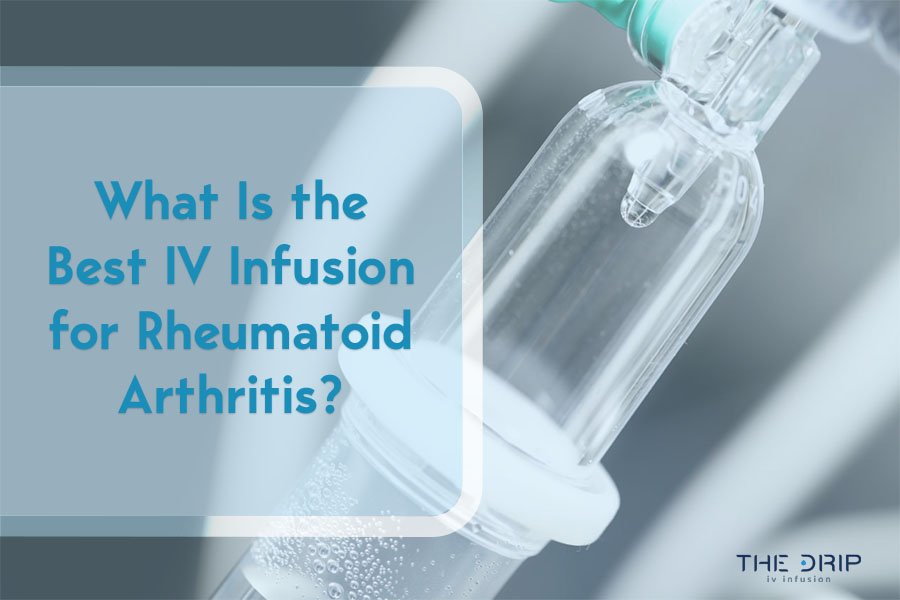In recent years there has been a rise in the popularity of IV treatments. At first, only celebrities and athletes had an intravenous treatment schedule, but now the practice is commercially available. Yet, as with any medicine, there are limitations regarding how often should you get IV therapy.
IV therapy has become a regular pampering treatment for many people, like getting your nails done or getting a haircut. It’s no wonder since the treatment offers many benefits. Also, there’s a wide variety of treatments to choose from. Now let’s dive into how often can you get IV fluids to reach your health goals.
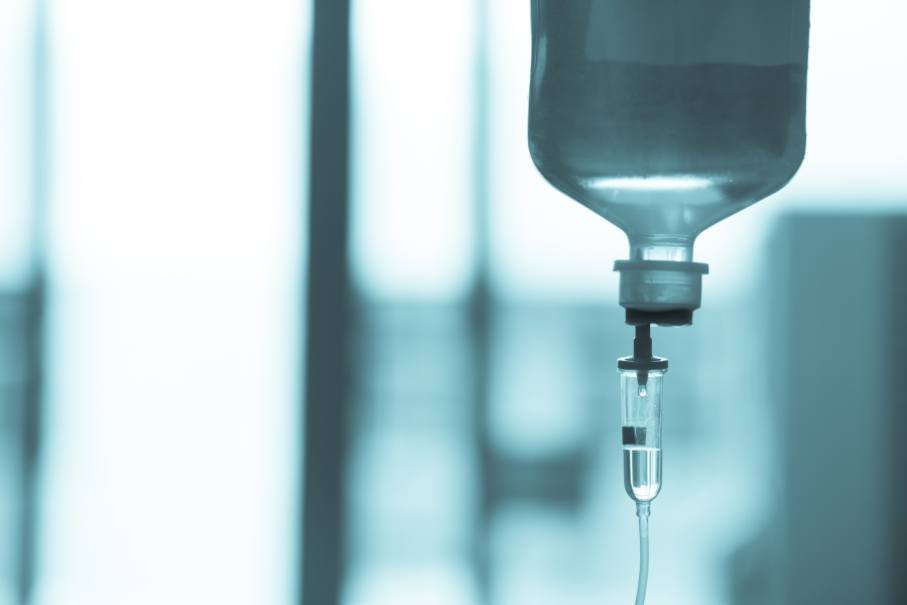
Source: shutterstock.com/ Photo Contributor: Chompoo Suriyo
How Often Should You Get IV Therapy
Many factors come into play when deciding upon an optimal IV infusion schedule. Those with illnesses may benefit from the treatments if they take them more regularly, like once every week. Healthier individuals will probably need to book a session only once per month.
Once nutritional levels are stable, most people will benefit from treatments spaced roughly two weeks apart. This is because each treatment should increase your nutritional level for a few weeks.
Getting IV therapy once every week
Anyone starting their IV therapy journey must first do a nutrient deficiency test. This would show professionals which IV mixture would be best suited for you.
Most people would start by getting treatments once every week, especially those with health conditions.
Aside from the possibility of such treatments to boost your immune system, these treatments can be great for your skin, nails, hair, energy levels, and focus.
Getting IV therapy once every two weeks
For most people, this is usually the best time frame. While the IV treatment fluids are temporary, the vitamins can stay in your body for days to weeks. Your body can receive the full recommended amount of vitamins every other week.
Getting IV therapy once every month
As time passes and your nutrient levels stabilize, you will notice you’ll only need to book one session every month. Your body is supposed to start holding onto the vitamins from each session for longer, so you won’t need as frequent sessions.
The recommended frequency for IV treatment to maintain optimal nutrient levels throughout the year is once a month.
Getting IV therapy for special events
Not everyone wants to be an advent IV therapy user. Some people prefer to book sessions for special events.
Some may book sessions when they have upcoming competitions. Some cocktails may boost the body’s endurance as well as overall health.
Some book sessions when they have a very important test or presentation. Some cocktails may help you stay sharp and maintain focus.
Others may book sessions when they notice symptoms of a cold or any other health concern. Almost all cocktails may boost your immune system and help your body fight off foreign bodies.
In other cases, some may schedule a treatment to get over a hangover or return from a trip abroad. Some cocktails may replenish you and make you feel fresh and energized. Also, all cocktails will hydrate you and may balance out your gut bacteria.
How Often Can You Get a Myers Cocktail?
The Mayers cocktail is made from Vitamin B-12, B-Complex, Calcium, Magnesium, and Vitamin C. By taking this cocktail, you might reduce the likelihood of exhaustion, seasonal diseases, headaches, and asthma. Also, Myers cocktails may be beneficial for short-term illnesses, extra replenishment, and not feeling best on given days.
As with any IV treatment, you should consult your doctor to see if it’s the right cocktail. That being said, it’s recommended you get the Myers cocktail once a week.
From this point onwards, after three or four times of getting the Mayers cocktail, you can space out your treatments once every two weeks.
How Often Can You Get IV Vitamin C Therapy?
Since Vitamin C is a water-soluble vitamin, it’s eliminated from the body in less than 24 hours. Considering this, more frequent use is required. Vitamin C should be taken in 500 mg daily doses.
But many people decide to obtain vitamin C intravenously through IV vitamin C therapy to increase their intake. How often can you do iv vitamin therapy depends on how much Vitamin C you require.
One session each week is optimal for IV Vitamin C therapy. If you’re battling a disease or are stressed, you could require more frequent IVs.
If you want to partake in such treatments for your physical beauty, a beauty expert can decide how frequently you require Vitamin C.
How Often Can You Get IV Glutathione Therapy?
As a potent antioxidant, glutathione may aid in preventing cell damage. It may be employed as a therapy for cancer and diseases like Parkinson’s and Alzheimer’s. Also, it may be used for detoxification, mental clarity, anti-aging and glowy skin.
Generally, obtaining a glutathione IV shouldn’t be done more than once a week. Yet, people that have chronic illnesses might have to get it more frequently.
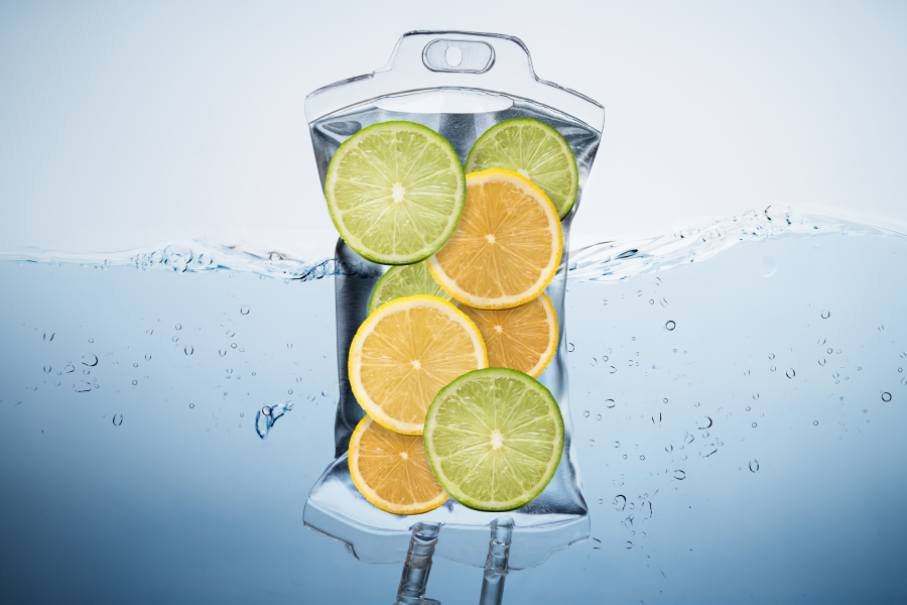
Source: shutterstock.com/ Photo Contributor: Andrey_Popov
IV Therapy Frequency Adjustments
Since you don’t know how your body will react to the therapy, you might have to adjust your schedule often. Yet, you first need to assess whether your current schedule is working for you or not. A few things to consider are:
Regular health assessments
Before you start with your IV therapy, remember to get blood and vitamin deficiency tests done. This way, you will be able to compare your stats after two to three sessions and monitor whether your nutrient levels are up or staying still.
If they’re slowly increasing after every treatment and not decreasing for a few weeks after treatment, there’s no need to change your therapy schedule.
Make sure to do regular medical check-ups with your doctor. You also have to monitor how the therapy is affecting your organs and senses.
Also, you need to make sure your nutrient levels aren’t too high. If the tests show highly increased vitamin levels, it’s time to lay off the IV for some time.
Listen to your body
You can see whether your current IV schedule works for you by looking at physical changes. Even after two sessions, you may start to notice your skin looking clearer and feeling smoother. Also, you may notice your nails getting stronger and your hair looking shinier.
Aside from physical changes, you might start to feel more energized. And all of that would be prompted by a good night’s rest; you may start to sleep better and for longer hours.
You might feel more sharp and focused and eager to get things done. You might not feel the need to drink a cup of coffee in order to start the day.
Ultimately, you would feel better overall. You would know that your IV therapy is working when you feel your overall well-being would be greater.
But, if the therapy is not working out for you, you may feel dizzy, or lethargic. Once again your body will tell you whether the therapy helps you rejuvenate your body.
Benefits and Side Effects of IV Treatments
As with any medicine, there are upsides and downsides to getting IV treatments regularly.
Benefits
You may gain enormous benefits when you stick to your recommended IV intervals. IV therapy benefits are as follows:
It may be absorbed fast into the bloodstream
It may aid in weight loss
It may boost the immune system
It may increase energy levels
An extremely fast way to possibly rehydrate
It may be pain-free
It may be great for those who require more nutrients
It may help with clear skin
It may help with working out
Side effects
Conversely, some people aren’t the best candidates for some treatments. Here are some of the side effects that may happen:
Collapsed vein– when a needle is put, or an IV is in one place for a long time, the vein may occasionally collapse.
Gas embolism– an IV may cause a gas embolism by pushing too much air into the vein. Even though it’s uncommon, it may have grave effects, including perhaps fatal ones.
Infection– an infection might happen if the region is not clear when the needle is inserted.
Infiltration- fluids may infiltrate the tissues around the vein if the needle moves or dislodges. Although it could cause pain and bruising, this is usually simple to fix.
Hematoma– may develop when blood spills from a blood artery into nearby tissues. It has a nasty bruise-like appearance and often fades away in a few weeks.
Phlebitis– it may ensue when the vein swells due to the IV.
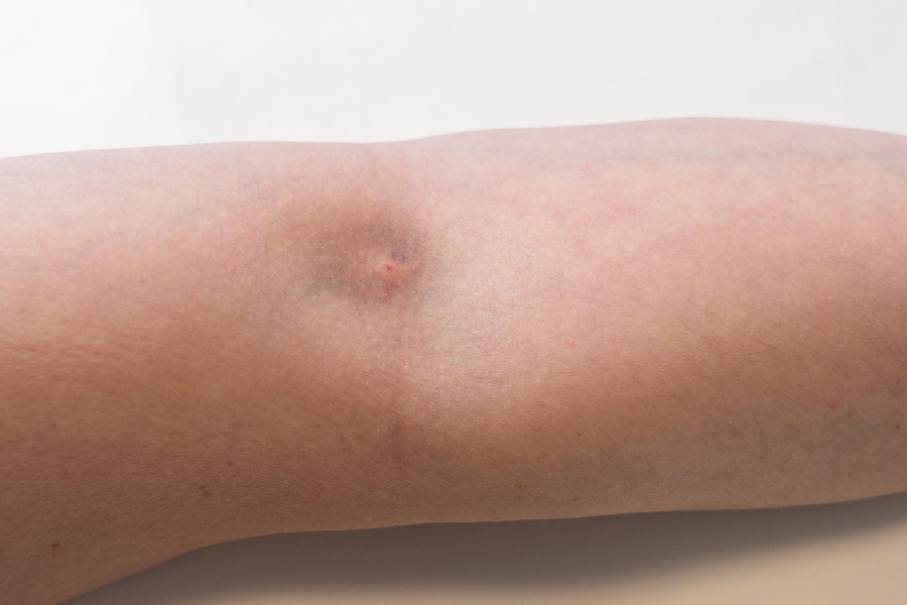
Source: shutterstock.com/ Photo Contributor: Chompoo Suriyo
Can You Overdose From IV Therapy?
Overdosing on IV therapy is almost impossible since an educated and trained medical professional will create your IV therapy timing guidelines and your needed dosage.
However, sometimes patients might feel the need to book more IV sessions. When it’s done without consulting a professional, it could lead to serious problems like fluid overload and hypervitaminosis.
Hypervolemia
Hypervolemia, commonly referred to as fluid overload, is the state of having too much fluid in the body. This condition is typically experienced by those with renal and heart disease and pregnant women. The most common symptom and adverse effect is swollen body parts.
When you’re overhydrated, you overwork your kidneys which might damage them in the long run. Remember, the kidney’s capacity to filter out fluids and nutrients of the body is limited.
Hypervitaminosis
Hypervitaminosis is a condition when vitamin store levels are unnaturally high. It can cause symptoms like euphoria, irritation, and even poisoning that may even result in paralysis. High frequency of IV therapy with vitamin cocktails may be intoxicating and may put the body into shock.
The fat-soluble Vitamins A and D are often the cause of hypervitaminosis. Compared to water-soluble vitamins, these vitamins accumulate and stay in the body longer. Hypervitaminosis A and Hypervitaminosis D are the most common types of this condition, as the vitamins are stored in the body’s liver and fatty tissues.
Frequently Asked Questions
How long does it take for an IV to start working?
Everyone’s response time to the fluid injection varies, but you may anticipate results in 45 minutes to several hours. The contents of the IV fluids and your dosage play a significant role. However, you might feel better and more invigorated even halfway through the session.
How long does IV stay in the body?
IV fluids may remain in the body for a few hours after absorption. However, the minerals, nutrients, and vitamins present in the fluid may stay in the body for up to months.
How is an intravenous Vitamin C treatment performed?
The process of Vitamin C infusion therapy is the same as any other IV treatment. A certain dose of Vitamin C will be diluted in sterile water to a total of a certain volume of mL. An infusion pump would infuse the solution.
Beforehand, a certified and trained professional would inject a needle into your vein, which leads the vitamin solution directly into the bloodstream. The needle will be attached to the container holding the vitamin C solution.
Which IV solution is best for dehydration?
The Myers cocktail is a universal vitamin solution used to help with different health concerns. It may aid in rapid recovery, rejuvenation, and replenishment of minerals and vitamins. Aside from helping with dehydration, a cocktail with these ingredients may boost the immune system.
How much does IV therapy cost in the U.S.?
On average, an IV session in the U.S. can cost from $300 to $700. The end price varies from clinic to clinic. However, the major determining factors are the chosen cocktail and its dosage.
Conclusion
IV therapy can be highly beneficial if done right. How often should you get IV therapy depends on your personal goals and current health condition. For IV therapy to work, treatment timing and right dozing are key. Also, picking the right IV cocktails is important since there are dozens to choose from.
But don’t worry. IV clinics like ours have competent medical professionals that will assist you in making the right decisions. They will help you pick the right vitamin mixture, draft your personal schedule, and work closely with you. You’ll most likely be able to accomplish your wellness goals through IV treatments.


